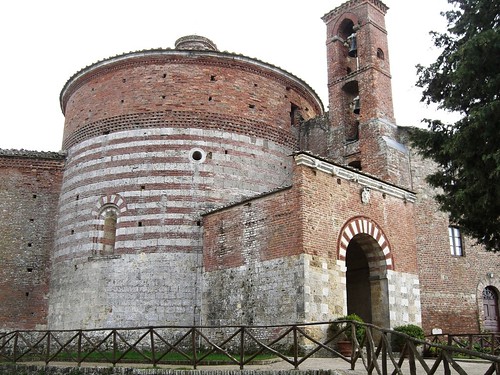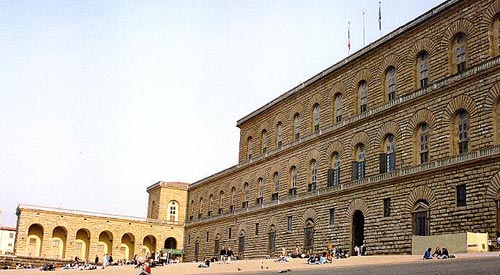Thursday, January 29, 2009
The museum is located beside the Convento of the Oblate, accommodated in a building with a beautiful garden and a cloister. We had free entrance but usually the ticket is really cheap, only 2,70 euros.
The museum is on the ground floor of the building, and is made of two distinguished sections. The first is about the topographical museum: more than an topographical museum: it is a documented history of the representation of a city seen through the eyes of the citizens in the ages. Maps in the past were difficult to trace, obviously bird-eye photos didn’t existed yet, so it was hard to calculate exactly distances. Maps used to give not only information about the geography, but also about cities, activities, points of interest.
the cloister and garden of the museum
Here is exposed the ancient and famous Map of the Chain (“la pianta della catena”), called in that way it has a frame decorated with a chain.
It’s really not a plant… is not more a general view Florence, an axonometric projection realized at the end of 1400, and is really big, it takes the entire wall.
It’s so beautiful and painted with an incredible care for details; above all it’s a witness of how looked Florence during the renaissance: a densely inhabited large city, still with cultivations out of the town-walls, encircled from its walls studded with doors. Every single palace and church are faithfully reproduced and clearly recognizable: Palazzo Vecchio Santa Maria Novella, the Cathedral… Arno river slides and is still a city fulcrum of people and activity: you can see people on the riverside fishing, bathing, building a bridge…
the Map of the Chain ("Pianta della Catena")
Besides the Plant of the Chain the museum conserve some other ancient pieces: the keys of the doors of the city: the ones of Porta San Frediano, Porta Santo Spirito and Porta San Gallo, enormous keys with their leather bags; they were of property of a private collector, once he died the keys were given back to the city of Florence.
Others ancient maps and city representation of Florence are exposed in the museum. There are also paintings, that show various parts of the city and how they changed through the centuries. A beautiful painting that shows the public execution of Girolamo Savonarola in the Piazza dell Signoria.
the keys of the doors of Florence
the plastic of the hystorical center bofore '800
In the second room of the museum are shown some archaeological artefacts found in the eighties, when piazza della Signoria had been re-pavemented: finally we can see some traces of the ancient roman Florence. The artefacts are few but interesting, and you can also find a really interesting plastic of Florence as it was in the roman age.
the plastic of Florence in the Roman Age













